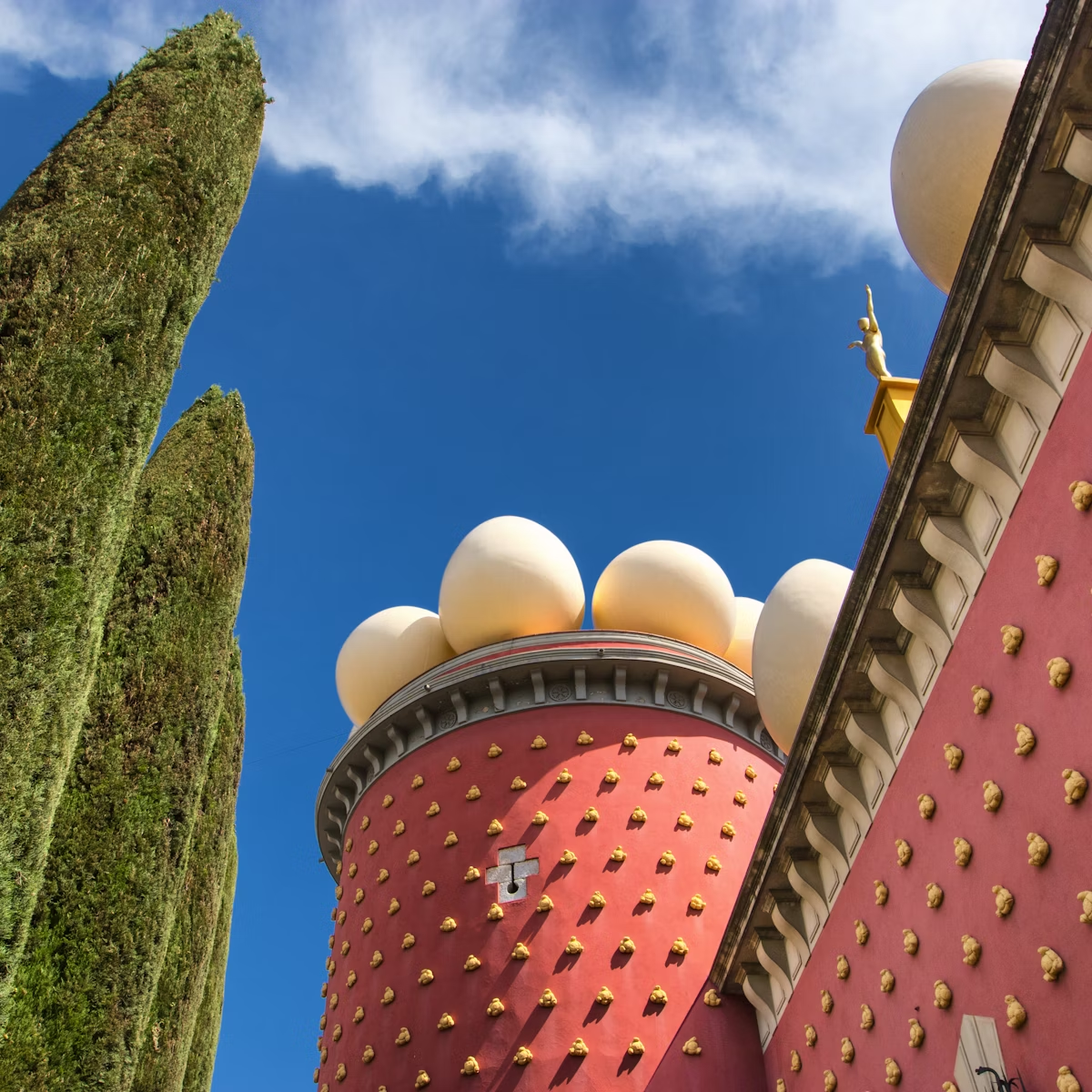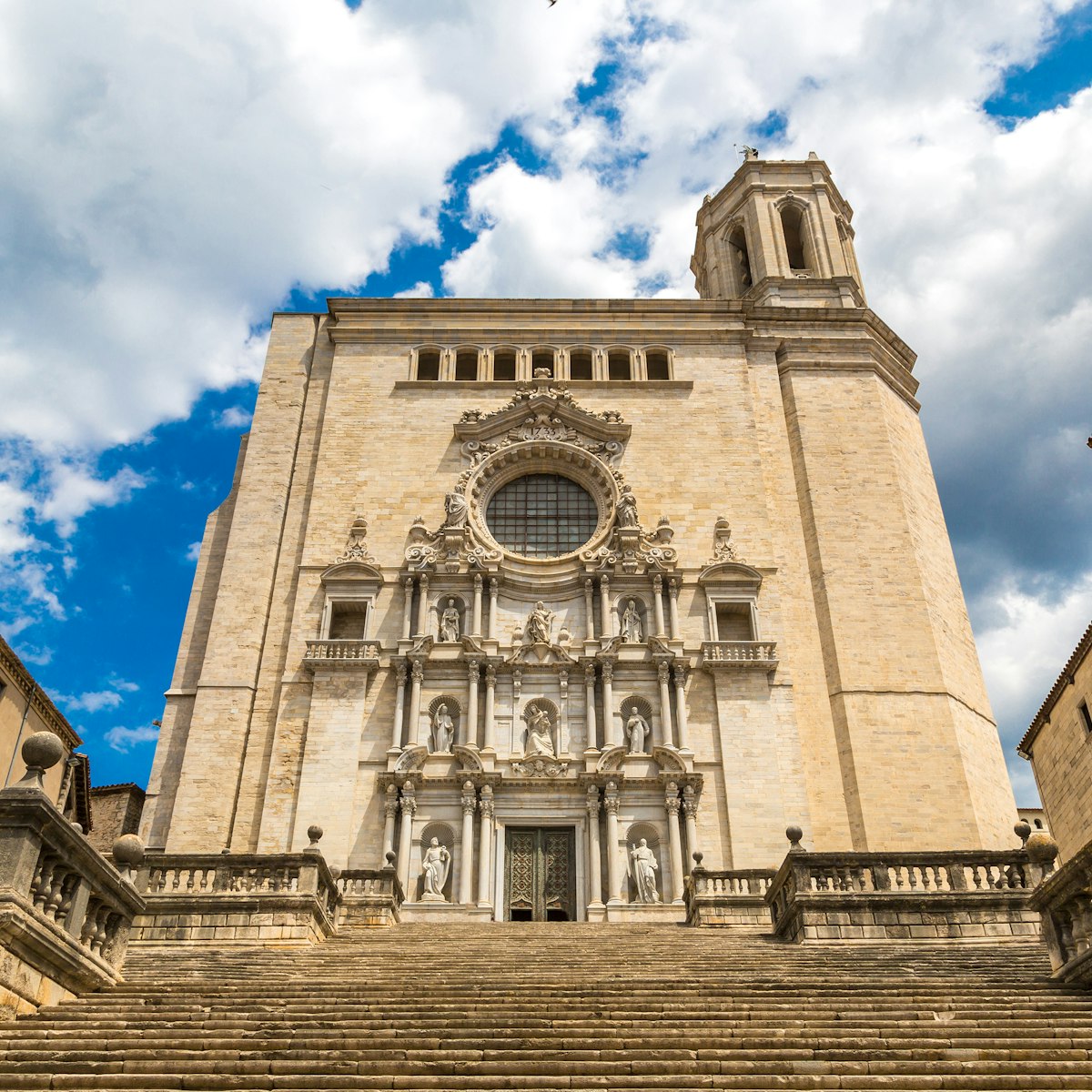If you’re intrigued by artist Salvador Dalí, the Castell de Púbol is an essential piece of the puzzle. Between Girona and Palafrugell (22km northwest of the latter, south off the C66), this 14th-century castle was Dalí’s gift to his wife and muse Gala, who is buried here. The Gothic-Renaissance building, with creeper-covered walls, spiral stone staircases and a shady garden, was decorated to Gala’s taste, though there are surrealist touches like a grimacing anglerfish fountain and a pouting-lips sofa.
The life of Gala Dalí is fascinating in its own right, due to her entanglement with several pivotal figures in the first half of the 20th century. Gala married French poet Paul Éluard in 1917, had a two-year affair with pioneer of Dadaism Max Ernst, and then met Dalí in 1929. With Dalí’s approval she continued to take lovers, though their loyalty to each other remained fierce. Russian-born Gala was as admired for her elegance as much as she was feared for her imposing manners. Within the castle you'll find a collection of her high-fashion ballgowns, including a red-brick-print number designed by Dalí himself.
In 1969 Dalí finally found the ideal residence to turn into Gala’s refuge. At the age of 76, Gala preferred to flit in and out of Dalí’s decadent lifestyle. Dalí was only permitted to visit the castle with advance written permission, a restriction that held considerable erotic charge for the artist.
Today the Castell de Púbol forms the southernmost point of Catalonia's ‘Salvador Dalí triangle’. The sombre castle is almost an antithesis to the flamboyance of Figueres' Teatre-Museu Dalí and Dalí's seaside home in Port Lligat near Cadaqués.
To get here, catch a bus to La Pera from Girona (€3.05, 40 minutes, six to nine daily) or Palafrugell (€3.15, 30 minutes, seven to 10 daily), and alight at the stop on the C66 then walk 2km south to the castle. Alternatively, take a train from Girona to Flaça (€3.30, 15 minutes, at least 15 daily), then taxi the last 5km.






